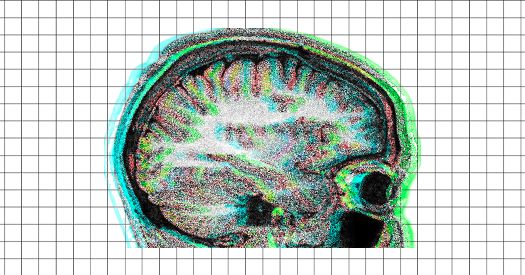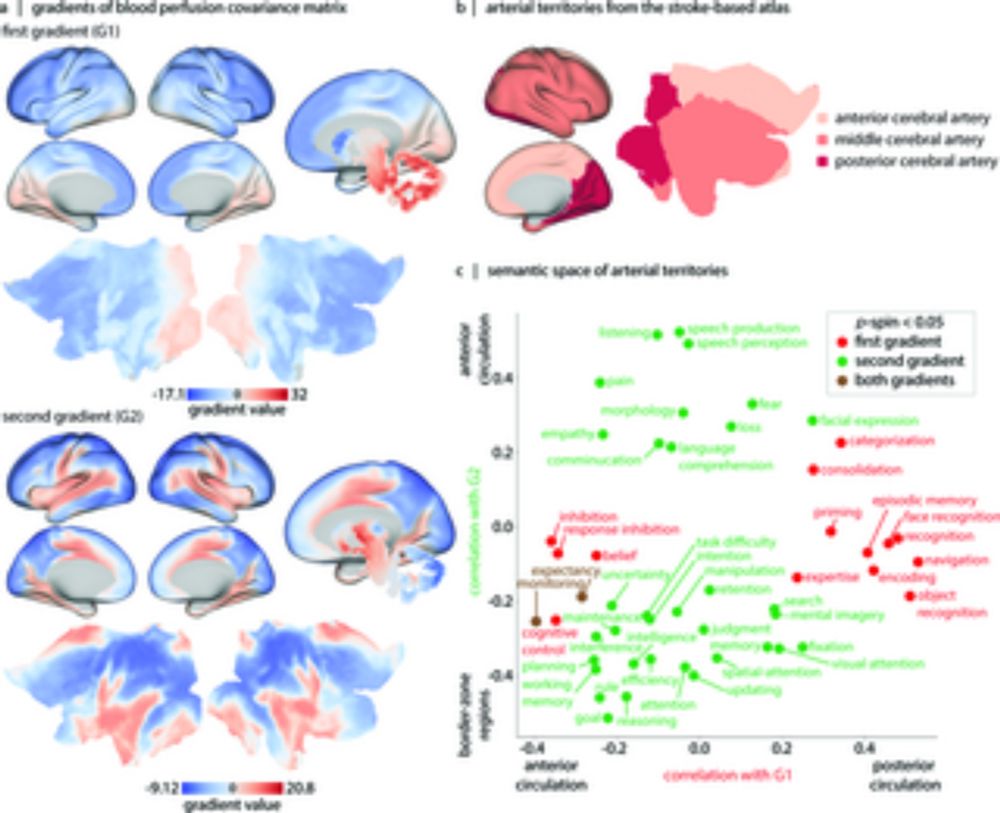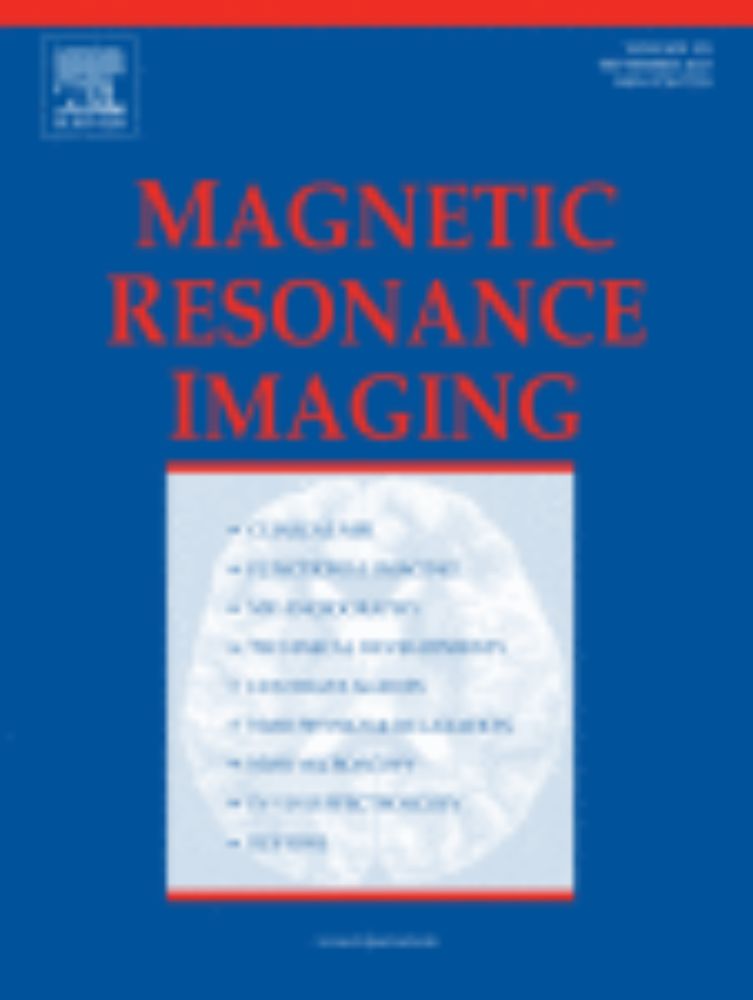YouTube video by HiTOP
Using HiTOP in Research
We’ve just published another video on HiTOP that tries to flesh out a bit more how the framework can be helpful in research: youtu.be/q0jOi_Nl1yo
We hope it’s useful, and are keen to hear any feedback
Thanks again so much to @tashtc.bsky.social for all of her hard work creating this video series ✨
07.10.2025 23:37 — 👍 38 🔁 16 💬 0 📌 1

👀
Lifespan Trajectories of Asymmetry in White Matter Tracts | bioRxiv www.biorxiv.org/content/10.1...
01.10.2025 01:05 — 👍 4 🔁 3 💬 0 📌 0

Authors retract Science paper on controversial fMRI method
Several MRI artifacts contribute to the neuronal activity signal picked up by the method, according to a preprint the authors posted this month.
A method for capturing neuronal activity using fMRI excited the neuroimaging field but couldn’t be replicated. Today, the authors of the original paper retracted their work.
By @callimcflurry.bsky.social
#neuroskyence
www.thetransmitter.org/retraction/a...
25.09.2025 18:10 — 👍 65 🔁 35 💬 0 📌 5
Excited to share that our work introducing the Reproducible Brain Charts (RBC) data resource is now published in Neuron!! 🎉
📚 Read the paper: authors.elsevier.com/c/1lpaF3BtfH...
🧠 Explore the RBC dataset: reprobrainchart.github.io
22.09.2025 21:51 — 👍 72 🔁 39 💬 3 📌 2
Check out this great thread on a fresh preprint by
@hyolee.bsky.social
! 🤩
Hyo led a new study where we & our fab collaborators take a closer look at sex differences in human cortical volume …
24.09.2025 10:42 — 👍 4 🔁 1 💬 0 📌 0
Brain Size: To Adjust or Not Adjust? It's Not a Matter of If, but How https://www.medrxiv.org/content/10.1101/2025.09.21.25336298v1
23.09.2025 00:25 — 👍 3 🔁 1 💬 0 📌 0
Acceptance and commitment therapy.
22.09.2025 16:57 — 👍 1 🔁 0 💬 0 📌 0
this is wild - i was aware of Mary-Claire King's absurdly important discoveries on BRCA / inherited breast cancer but I had no idea that her first PhD paper (King & Wilson 1975, Science, not bad lol) is the "99% of protein coding shared btwn chimps and humans" result
www.science.org/doi/abs/10.1...
20.09.2025 09:17 — 👍 124 🔁 32 💬 3 📌 4

Dr. Peter S. Allen Obituary | 1939 - 2025 | Edmonton Journal Remembering
View Dr. Peter S. Allen's complete obituary, share memories, and explore heartfelt tribute posts from the community.
💔 It is with great sadness that I report the passing of my Ph.D. supervisor, Dr. Peter Allen from Alzheimer’s. His trainees (and their trainees and their trainees and their trainees) are still making a mark in the world of in-vivo magnetic resonance. 🇨🇦 www.remembering.ca/obituary/pet...
12.09.2025 18:28 — 👍 46 🔁 9 💬 5 📌 0

Join us next July in Panama!! #FITNG2025 --> 2026 🌴🤓
08.09.2025 17:27 — 👍 9 🔁 2 💬 1 📌 1

New preprint from stellar IRTG PhD student Amelie Rauland + team on white matter bundle reconstruction! Shows that WM bundles can be reliably extracted from simple 32-direction dMRI & features predict cognition - huge potential for legacy and clinical data. Thread 👇
www.biorxiv.org/cgi/content/...
07.09.2025 14:59 — 👍 31 🔁 18 💬 1 📌 0
Love Fourier Transforms! We use them a lot in our work.
They are already such a huge part of our everyday lives. Our brains do Fourier Transforms!
Nice piece here on some of the history of where they came from, how they work and applications.
🧪
03.09.2025 20:22 — 👍 61 🔁 16 💬 5 📌 0
Is precision functional brain imaging in babies possible? YES! We show this in not one but two new preprints out of WashU and @umn-midb.bsky.social! 1️⃣: www.biorxiv.org/content/10.1... 2️⃣: www.biorxiv.org/content/10.1...
🐣👶🧠
29.08.2025 20:36 — 👍 46 🔁 15 💬 1 📌 5

Models as Prediction Machines: How to Convert Confusing Coefficients into Clear Quantities
Abstract
Psychological researchers usually make sense of regression models by interpreting coefficient estimates directly. This works well enough for simple linear models, but is more challenging for more complex models with, for example, categorical variables, interactions, non-linearities, and hierarchical structures. Here, we introduce an alternative approach to making sense of statistical models. The central idea is to abstract away from the mechanics of estimation, and to treat models as “counterfactual prediction machines,” which are subsequently queried to estimate quantities and conduct tests that matter substantively. This workflow is model-agnostic; it can be applied in a consistent fashion to draw causal or descriptive inference from a wide range of models. We illustrate how to implement this workflow with the marginaleffects package, which supports over 100 different classes of models in R and Python, and present two worked examples. These examples show how the workflow can be applied across designs (e.g., observational study, randomized experiment) to answer different research questions (e.g., associations, causal effects, effect heterogeneity) while facing various challenges (e.g., controlling for confounders in a flexible manner, modelling ordinal outcomes, and interpreting non-linear models).

Figure illustrating model predictions. On the X-axis the predictor, annual gross income in Euro. On the Y-axis the outcome, predicted life satisfaction. A solid line marks the curve of predictions on which individual data points are marked as model-implied outcomes at incomes of interest. Comparing two such predictions gives us a comparison. We can also fit a tangent to the line of predictions, which illustrates the slope at any given point of the curve.

A figure illustrating various ways to include age as a predictor in a model. On the x-axis age (predictor), on the y-axis the outcome (model-implied importance of friends, including confidence intervals).
Illustrated are
1. age as a categorical predictor, resultings in the predictions bouncing around a lot with wide confidence intervals
2. age as a linear predictor, which forces a straight line through the data points that has a very tight confidence band and
3. age splines, which lies somewhere in between as it smoothly follows the data but has more uncertainty than the straight line.
Ever stared at a table of regression coefficients & wondered what you're doing with your life?
Very excited to share this gentle introduction to another way of making sense of statistical models (w @vincentab.bsky.social)
Preprint: doi.org/10.31234/osf...
Website: j-rohrer.github.io/marginal-psy...
25.08.2025 11:49 — 👍 943 🔁 283 💬 48 📌 19
New paper alert! This paper describes the work that we have been doing in the last few years to create a software ecosystem for tractometry that is extensible, interoperable, and generally useful.
20.08.2025 17:21 — 👍 18 🔁 4 💬 3 📌 0
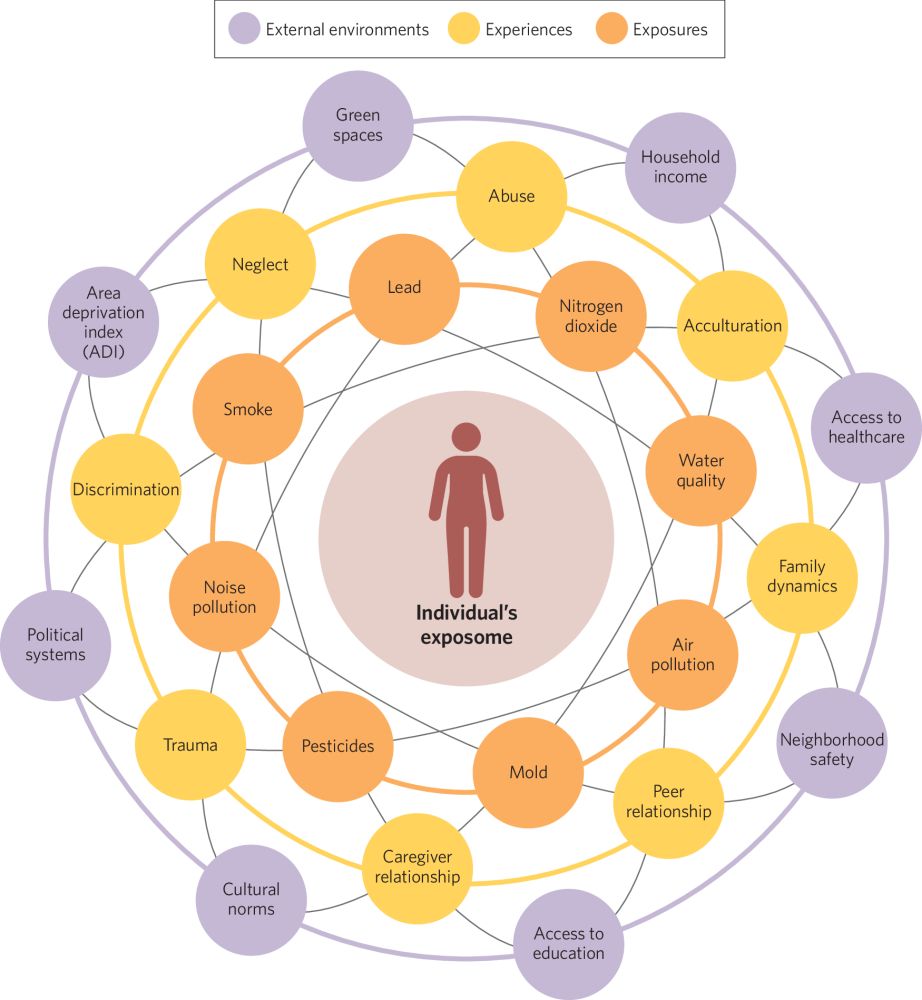
The effect of the “exposome” on developmental brain health and cognitive outcomes
Neuropsychopharmacology - The effect of the “exposome” on developmental brain health and cognitive outcomes
Absolutely thrilled to share the 🌟 FIRST PAPER 🌟 from ACORN Lab! 🐿️ I’m beyond proud of all-star grad student @heatherarobinson.bsky.social for this review of “exposome” effects on neurodevelopment & cognition! Paper here rdcu.be/ezUqx & thread below 👇 /1
#neuroskyence #PsychSciSky #devsky #cogdev
08.08.2025 16:22 — 👍 68 🔁 32 💬 4 📌 1
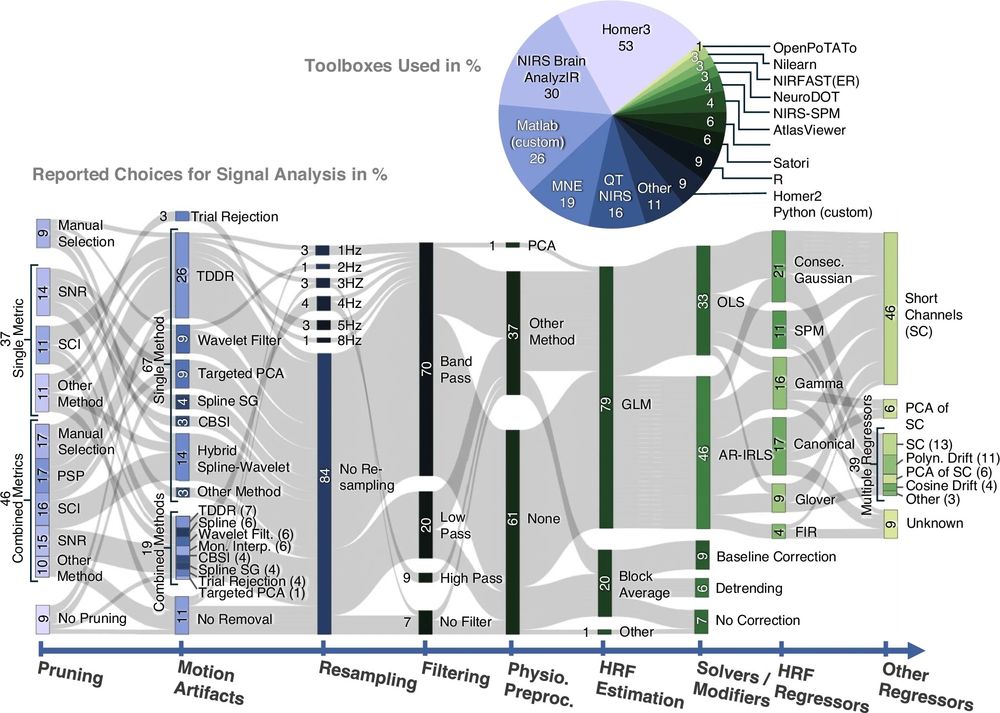
Sankey diagram showing analysis steps for fNIRS. Snakes flow from left to right showing different design choices that many teams made during data analysis. Overall it looks like sort of a mess.
38 research teams analyzed the same fNIRS data...Really nice visualization of the variety of processing pipelines people use from Meryem Yücel, Rob Luke, et al.:
"fNIRS reproducibility varies with data quality, analysis pipelines, and researcher experience"
www.nature.com/articles/s42...
05.08.2025 13:00 — 👍 27 🔁 7 💬 0 📌 3
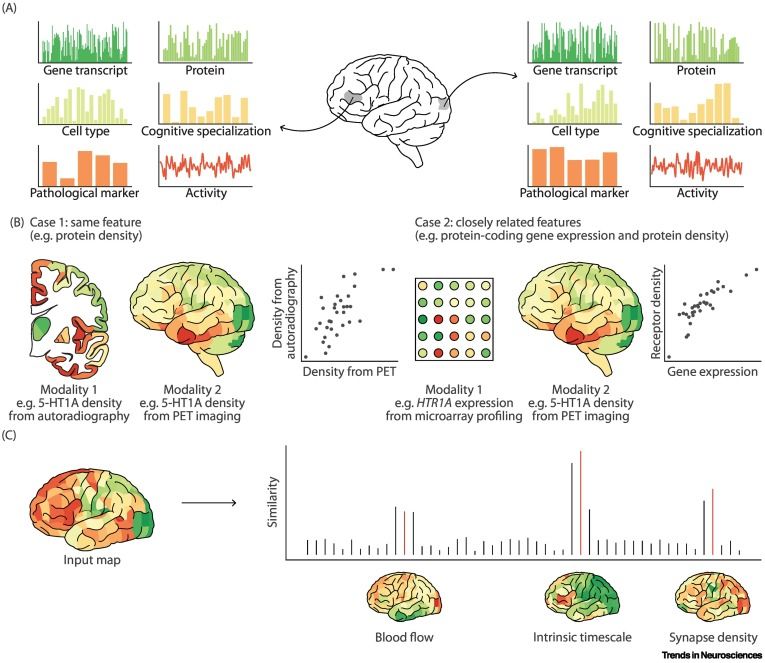
Integrating and interpreting brain maps | doi.org/10.1016/j.ti...
Imaging and recording technologies make it possible to map multiple biological features of the brain. How can these features be conceptually integrated into a coherent understanding of brain structure and function? ⤵️
04.08.2025 14:26 — 👍 72 🔁 42 💬 1 📌 0
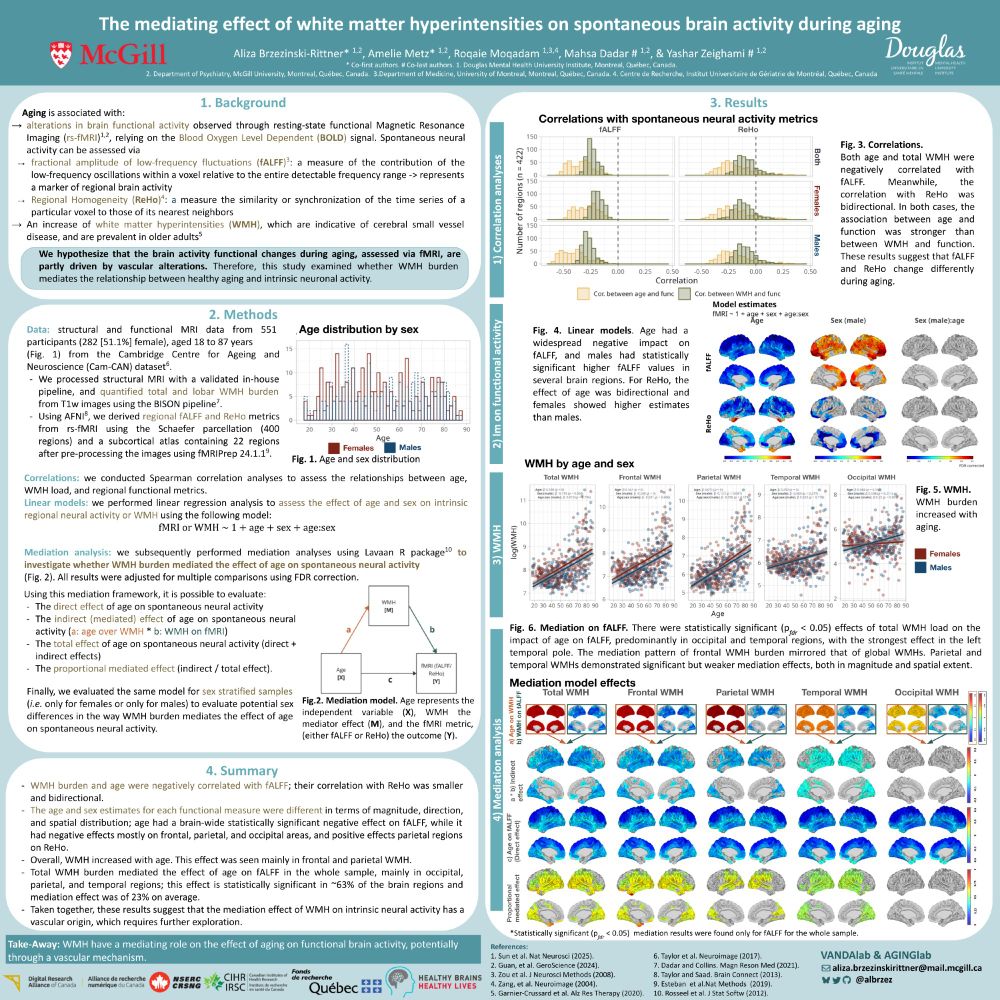
Hey #AAIC25 !
Today I'll be sharing our research on the mediating effect of WMH on spontaneous brain activity during aging! 🧠
Join me on poster 430!
@ameliemetz.bsky.social @dadarmahsa.bsky.social @yasharneuro.bsky.social @roqamoqa.bsky.social
28.07.2025 14:11 — 👍 6 🔁 4 💬 0 📌 0
Dr. Mahsa Dadar receives the 2025 Principal’s Prize for Outstanding early-career Researchers!
Learn more : douglas.research.mcgill.ca/dadar-2025-p...
***
Dre Mahsa Dadar reçoit le Prix du recteur pour nouveaux chercheurs 2025!
En savoir plus : douglas.research.mcgill.ca/fr/news/dre-...
04.06.2025 12:02 — 👍 2 🔁 1 💬 0 📌 0
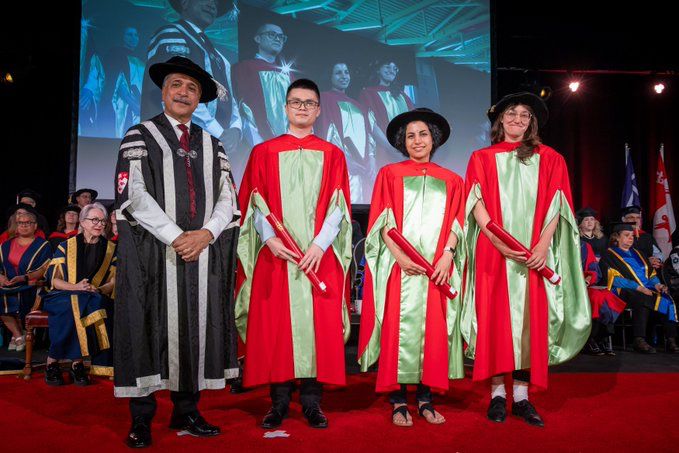
Congrats to HBHL-funded researcher & 2022 HBHL New Faculty Recruit @dadarmahsa.bsky.social on being awarded the President’s Prize for Outstanding Emerging Researchers at the 2025 @mcgill.ca @healthsciences.mcgill.ca Convocation Ceremony! Well deserved. 👏
🔗 reporter.mcgill.ca/mcgills-pres...
29.05.2025 19:10 — 👍 6 🔁 4 💬 0 📌 1
Dubois, Grotheer, Yang, Tournier, Beaulieu, Lebel: Small brains but big challenges: white matter tractography in early life samples https://arxiv.org/abs/2504.20554 https://arxiv.org/pdf/2504.20554 https://arxiv.org/html/2504.20554
30.04.2025 06:15 — 👍 3 🔁 1 💬 1 📌 0
📣 The FRQ announced the results of its funding applications for researcher and student salary awards. Congratulations!!
***
📣 Le FRQ a annoncé les résultats de ses demandes de financement. Félicitations!
Learn more / Apprenez en plus :
douglas.research.mcgill.ca/news/frqs-fu...
05.05.2025 13:07 — 👍 2 🔁 1 💬 0 📌 0
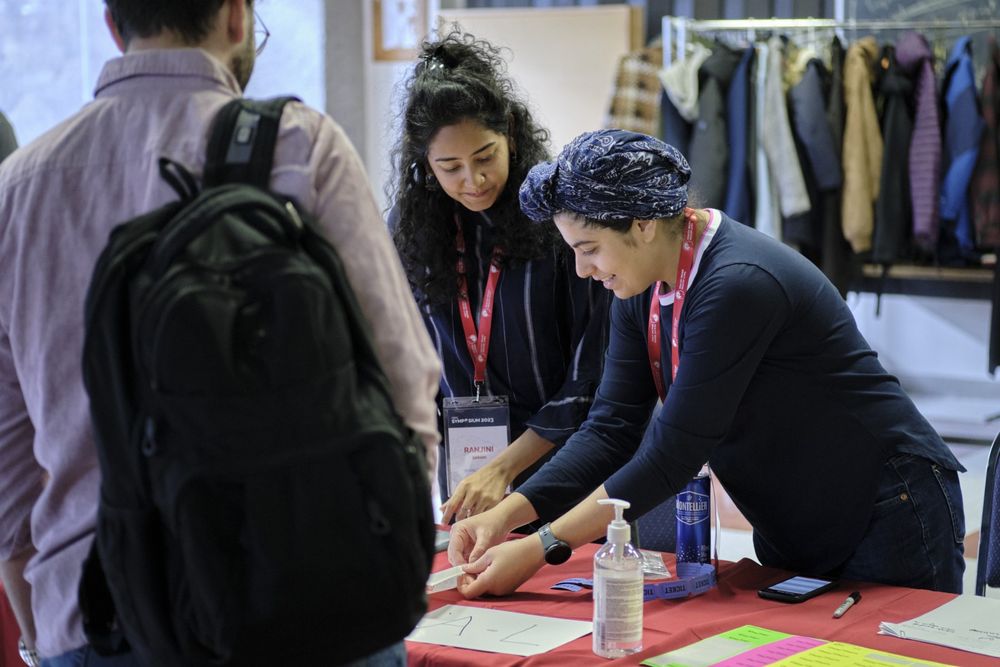
Want to get involved with #HBHLSymposium2025? Volunteer with us!
We're looking for registration, catering, guest & panelist support and logistics support.
Sign up by Apr 18: bit.ly/4ieyr1d
@theneuro.bsky.social | @douglasresearch.bsky.social | @cusm-muhc.bsky.social | @healthsciences.mcgill.ca
10.04.2025 15:04 — 👍 3 🔁 3 💬 0 📌 0
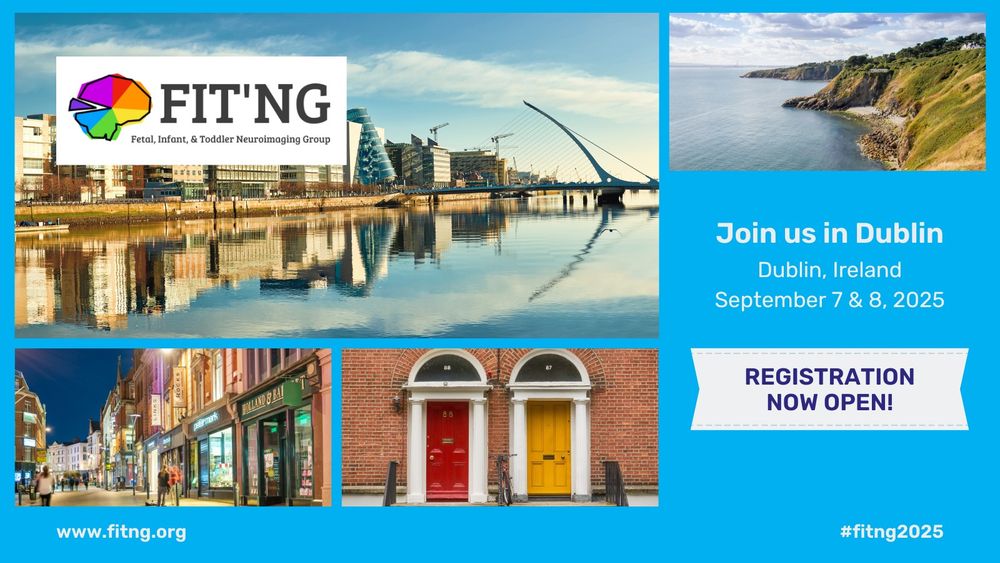
🚨 Early bird registration is now open for #FITNG2025 happening on September 7 & 8, in Dublin, Ireland.
🌐 fitng.org/registration/
09.04.2025 13:43 — 👍 1 🔁 2 💬 0 📌 1
not very committed to sparkle motion
La mejor información en español. Con nuestra mirada puesta en España, Europa y América. Suscríbete: https://tinyurl.com/yfbk27jh
Aquí puedes consultar nuestra política de privacidad: https://tinyurl.com/32dnhzc9
Clinical Psych Prof @UCalgary studying child development, mental health, screens, adversity & resilience | firstgen | settler | mum
www.madiganlab.org | www.ACEsHub.org | www.copewithtrauma.org
Professors are the enemy... of this bullshit.
🧠〰️〰️〰️〰️〰️〰️〰️〰️〰️〰️〰️〰️〰️〰️〰️〰️
Neuroelectromagneticoscillationsexpialidocious!
🧠〰️〰️〰️〰️〰️〰️〰️〰️〰️〰️〰️〰️〰️〰️〰️〰️
Professor, Center of Functionally Integrative Neuroscience, Aarhus University
Le plus grand centre de recherche universitaire en apprentissage profond — The world's largest academic research center in deep learning.
CTO of Technology & Society at Google, working on fundamental AI research and exploring the nature and origins of intelligence.
Programador de cine. Periodista cultural. Escribo sobre cine, comida, libros, viajes y ciudades. Presento cine y video y afines en todas partes.
Geriatric millennial. ES/EN.
Plants, aquariums and politics.
🇨🇷🏳️🌈
Cine y poco más.
En/De Costa Rica.
https://linktr.ee/natisol?utm_source=linktree_profile_share<sid=17044458-59eb-417c-8868-c10ddde87d26
Menswear writer. Editor at Put This On. Words at The New York Times, The Washington Post, The Financial Times, Esquire, and Mr. Porter.
If you have a style question, search:
https://dieworkwear.com/ | https://putthison.com/start-here/
Curating Magnetic Resonance news since 2011. use #NMRchat (New Magnetic Resonance Chat) or tag 🧲 for everything MR, NMR, EPR, ESR and MRI. No endorsements
Upcoming Magnetic Resonance Events in 2025/26 (google doc online, being populated) t.ly/4laEY
The Society for Philosophy and Neuroscience (SPAN) is a new philosophical and scientific society dedicated to providing a forum for the collaboration between philosophers and neuroscientists. philandneuro.com | thefeedback.blog
Reporter at The Transmitter | PhD, Neuroscience from UPenn 🧠 | Prev: Science, The Open Notebook & ‘21 AAAS Mass Media Fellow at STAT News | Boricua 🇵🇷
Writer, Teacher | helping people write and be heard | Founder, Fasano Academy, educating the whole human being
Math Assoc. Prof. (On leave, Aix-Marseille, France)
Teaching Project (non-profit): https://highcolle.com/
Bourses et subventions dans les secteurs des sciences naturelles/génie, de la santé, des sciences humaines/sociales, des arts/lettres. Nous avons la recherche et l'innovation à ♥️.
#communautéFRQ
Dirigé par @scichefqc.bsky.social
👉 https://frq.gouv.qc.ca
Banting Postdoctoral Fellow @ MPI CBS, Leipzig 🇩🇪
The Neuro / McGill University grad & Montreal lover 💞
Brains, open science, metal & running are my jam 🧠
Co-founder: https://new-epilepsy.com ⚡
Co-organizer: https://gradients-workshop.github.io/ 🌈
Cognitive Neuroscience Society (33rd) Annual Meeting will be held March 7 -10, 2026 in Vancouver, B.C., Canada. #CNS2026
https://www.cogneurosociety.org/
Professor
Department Gadfly
Data Alchemist
Synthetic Psychologist
Zombie Apologist
“The enemy” - JD Vance
Opinions are my own. Not gonna let my employer take credit for them.



